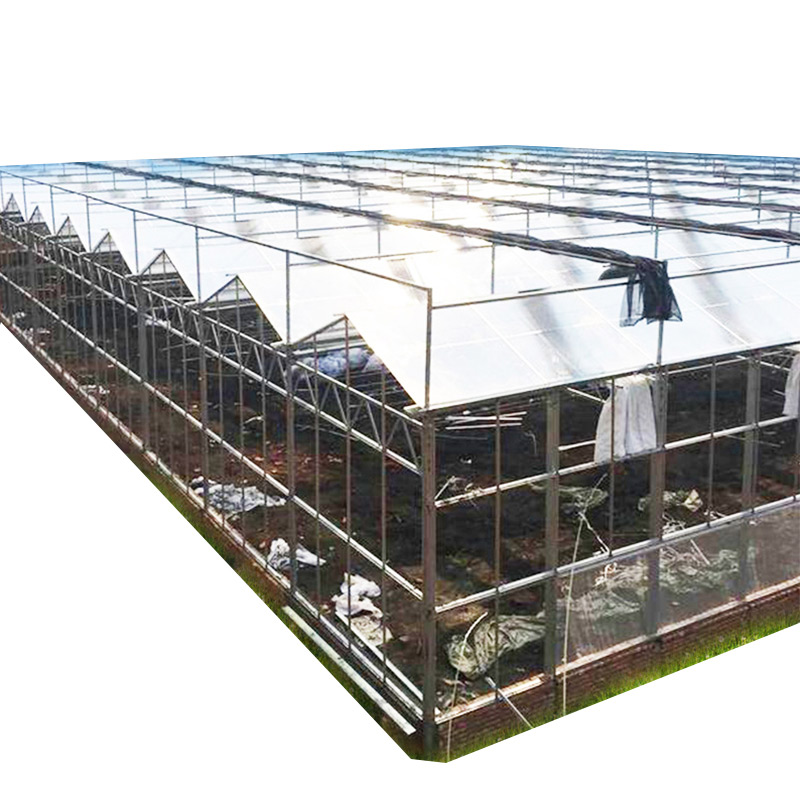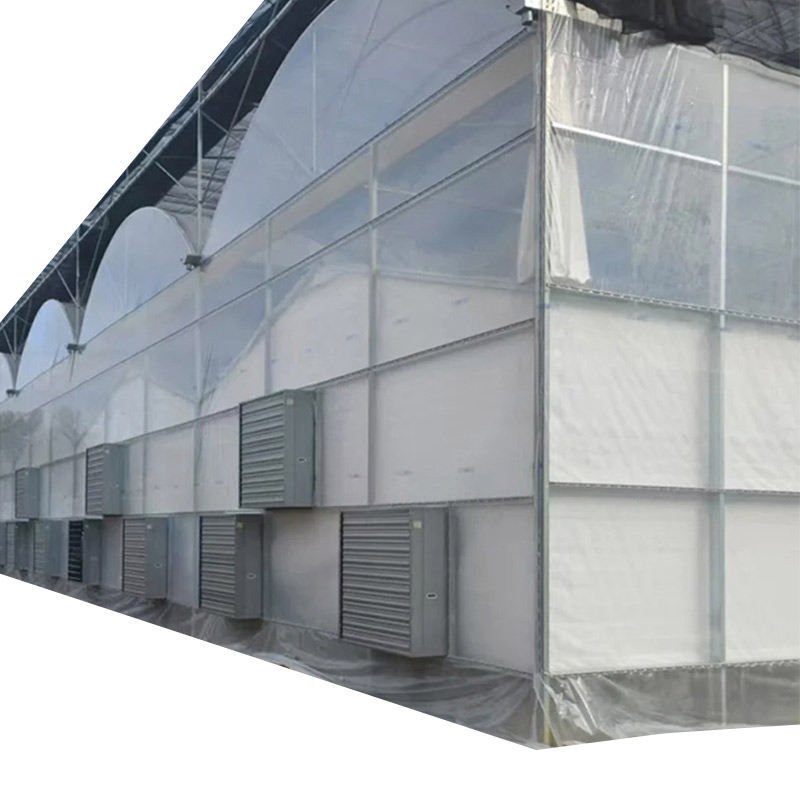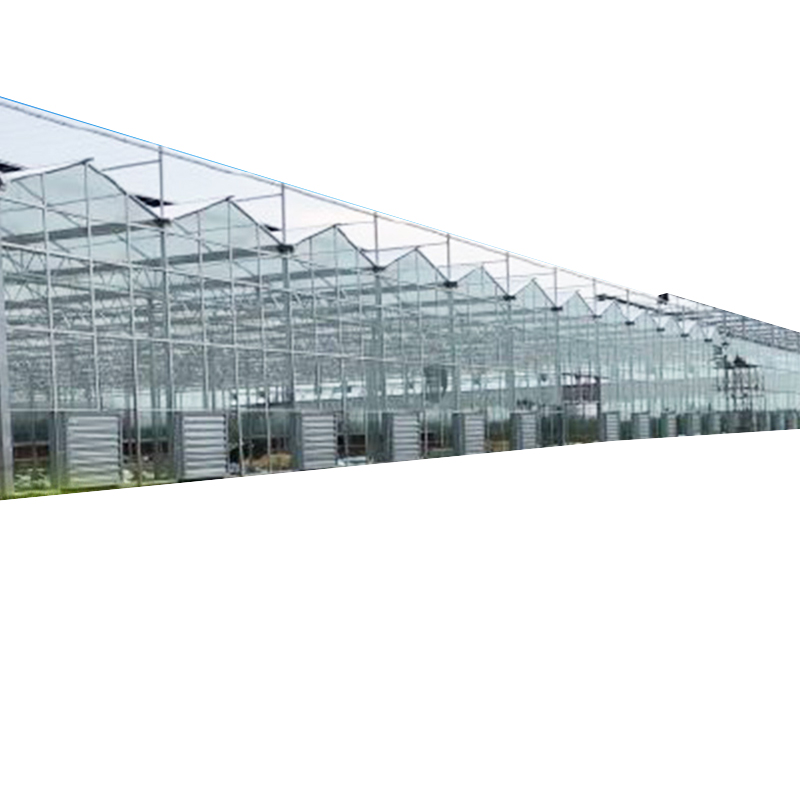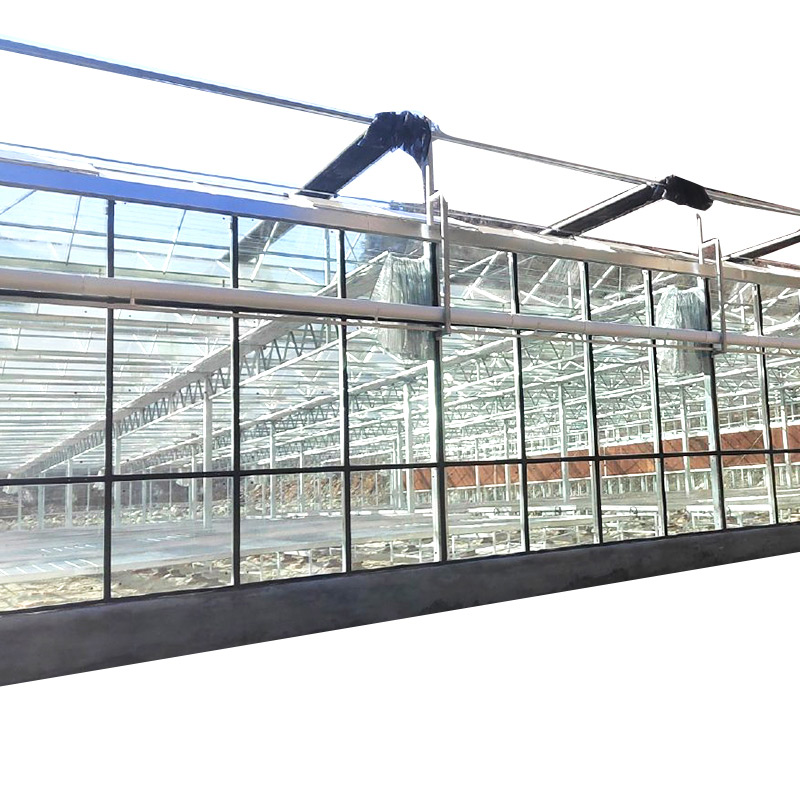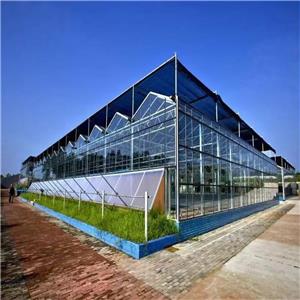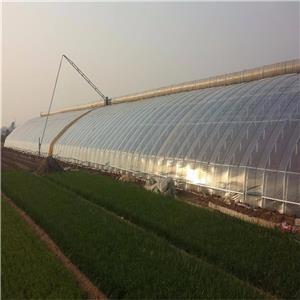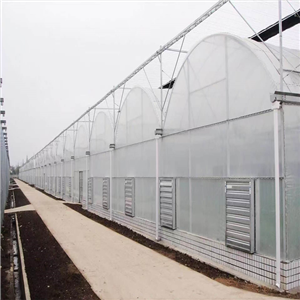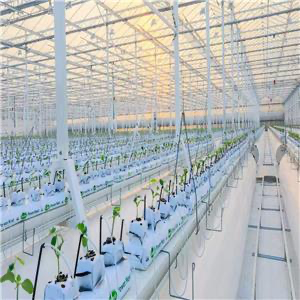
Polycarbonate greenhouse for vegetable cultivation,Polycarbonate greenhouse for fruit cultivation,polycarbonate greenhouse bunnings and polycarbonate lean to greenhouse are Specially designed for commercial and hobbyist growers, this polycarbonate greenhouse provides the ideal controlled environment for high-yield vegetable production. The multi-wall panels (4-16mm thickness) deliver: 90% light diffusion – Prevents leaf scorch while ensuring even canopy penetration, Thermal insulation (R1.7-R3.5) – Maintains stable temps for warm-season crops like tomatoes (-5°C to +40°C range),UV protection – Blocks harmful rays while transmitting photosynthesis-active radiation。
Ecological Vegetable Growing Polycarbonate Greenhouse
1. Introduction to Ecological Greenhouse Farming,Polycarbonate greenhouse for vegetable cultivation,Polycarbonate greenhouse for fruit cultivation and polycarbonate greenhouse bunnings
Ecological vegetable production in polycarbonate greenhouses represents the future of sustainable agriculture, combining advanced materials with organic principles. These systems enable:
✔ Year-round production without synthetic chemicals
✔ 90% water savings compared to field cultivation
✔ Carbon-negative footprints through renewable integration
✔ Biodiversity preservation with pollinator habitats
Modern ecological greenhouses achieve 30-50% higher yields than conventional organic farming while meeting EU Organic and USDA NOP certification standards.
2. Why choose ecological Greenhouse Farming,Polycarbonate greenhouse for vegetable cultivation,Polycarbonate greenhouse for fruit cultivation and polycarbonate greenhouse bunnings?
Material Advantages for Eco-Farming
| Property | Ecological Benefit |
|---|---|
| 90% light transmission | Reduces supplemental lighting needs |
| UV-resistant | Extends lifespan to 20+ years |
| Thermal insulation (R1.7-3.5) | Cuts heating energy by 40% |
| Recyclable | Closed-loop material lifecycle |
Comparative Analysis
| Material | Embodied Energy (MJ/m²) | Recyclability |
|---|---|---|
| Polycarbonate | 120 | 100% |
| Glass | 280 | 85% |
| Polyethylene | 95 | 30% |
3. Structural Design for ecological Greenhouse Farming,Polycarbonate greenhouse for vegetable cultivation,Polycarbonate greenhouse for fruit cultivation and polycarbonate greenhouse bunnings
Key Features of ecological Greenhouse Farming,Polycarbonate greenhouse for vegetable cultivation,Polycarbonate greenhouse for fruit cultivation and polycarbonate greenhouse bunnings
Rainwater harvesting (100L/m²/year collection)
East-west orientation for optimal solar gain
Modular spans (4-8m widths for crop diversity)
Native stone foundations reducing concrete use
Biodiversity Enhancements
Insectary planting zones
Bat boxes for pest control
Reflective mulch corridors
4. Microclimate Management of ecological Greenhouse Farming,Polycarbonate greenhouse for vegetable cultivation,Polycarbonate greenhouse for fruit cultivation and polycarbonate greenhouse bunnings
Temperature Control
Passive solar design (thermal mass walls)
Phase-change materials (5-8°C stabilization)
Automated shade screens (Aluminet 30%)
Humidity Regulation of polycarbonate lean to greenhouse
| Crop | Day RH | Night RH |
|---|---|---|
| Tomatoes | 60-70% | 75-85% |
| Leafy greens | 70-80% | 85-90% |
5. Soil-Free Ecological Systems ecological Greenhouse Farming,Polycarbonate greenhouse for vegetable cultivation,Polycarbonate greenhouse for fruit cultivation and polycarbonate greenhouse bunnings
Approved Organic Methods
Biochar substrate beds (20% char, 80% coco coir)
Vermiponics (worm-assisted hydroponics)
Aquaponics (fish:plant ratio 1kg:10 plants)
Nutrient Cycling
Compost tea irrigation (100:1 dilution)
Mycorrhizal inoculants (5g/m² application)
6. Water Conservation of ecological Greenhouse Farming,Polycarbonate greenhouse for vegetable cultivation,Polycarbonate greenhouse for fruit cultivation and polycarbonate greenhouse bunnings
Efficient Technologies of polycarbonate lean to greenhouse
Condensate recovery (15L/m²/day in humid climates)
Subsurface drip irrigation (0.5L/plant/day)
Capillary matting for seedlings
Water Source Options of polycarbonate lean to greenhouse
| Source | Filtration Needs |
|---|---|
| Rainwater | 50μm screen |
| Greywater | Biofilter + UV |
| Aquifer | Reverse osmosis |
7. Natural Pest Management of ecological Greenhouse Farming,Polycarbonate greenhouse for vegetable cultivation,Polycarbonate greenhouse for fruit cultivation and polycarbonate greenhouse bunnings
IPM Strategies
Beneficial insects (1 Encarsia/10m² for whitefly)
Botanical sprays (neem oil 0.5% concentration)
Physical barriers (50-mesh screens)
Pest-Resistant Designs
Double-door airlocks
Antimicrobial panel coatings
8. Energy Solutions of polycarbonate lean to greenhouse
Renewable Integration
| Technology | Capacity |
|---|---|
| Solar PV | 50W/m² |
| Geothermal | 5kW heat pump |
| Biomass | 15kg woodchips/m²/year |
9. Organic Nutrition of polycarbonate lean to greenhouse
Approved Inputs
Seaweed extract (2mL/L weekly)
Fish emulsion (N-P-K 5-2-2)
Rock dust for micronutrients
Nutrient Monitoring
EC range: 1.2-2.5 mS/cm
pH stability: 6.0-6.8
10. Crop Rotation Models
3-Year Rotation Plan
| Year | Spring | Summer | Fall |
|---|---|---|---|
| 1 | Spinach | Tomato | Kale |
| 2 | Peas | Cucumber | Chard |
| 3 | Radish | Pepper | Arugula |
11. Pollinator Support
Nectar corridors every 10m
Solitary bee tubes (200/m²)
Pesticide-free zones
12. Automation
Biofeedback irrigation (soil moisture sensors)
AI pest detection (camera monitoring)
13. Certification
EU Organic (EC 834/2007)
USDA Organic (NOP standards)
Demeter Biodynamic
14. Case Studies
Swiss Bio-Greenhouse (2023):
1.2ha polycarbonate
98% renewable energy
45 vegetable varieties
Certifications: Bio Suisse, EU Organic
15. Economics
| Scale | Yield (kg/m²/yr) | Premium Price |
|---|---|---|
| 500m² | 38 | 30% |
| 1,000m² | 42 | 25% |
| 5,000m² | 45 | 20% |
16. Maintenance
Monthly: Beneficial insect releases
Annual: Panel optical testing
17. Troubleshooting
Issue: Nutrient lockout
Solution: Flush with humic acid (2mL/L)
18. Future Tech
Photosynthetic AI optimization
Self-repairing polycarbonate
19. Conclusion
Ecological polycarbonate greenhouses deliver certified organic yields with industrial efficiency, proving that sustainable agriculture can be productive, profitable, and planet-positive.

